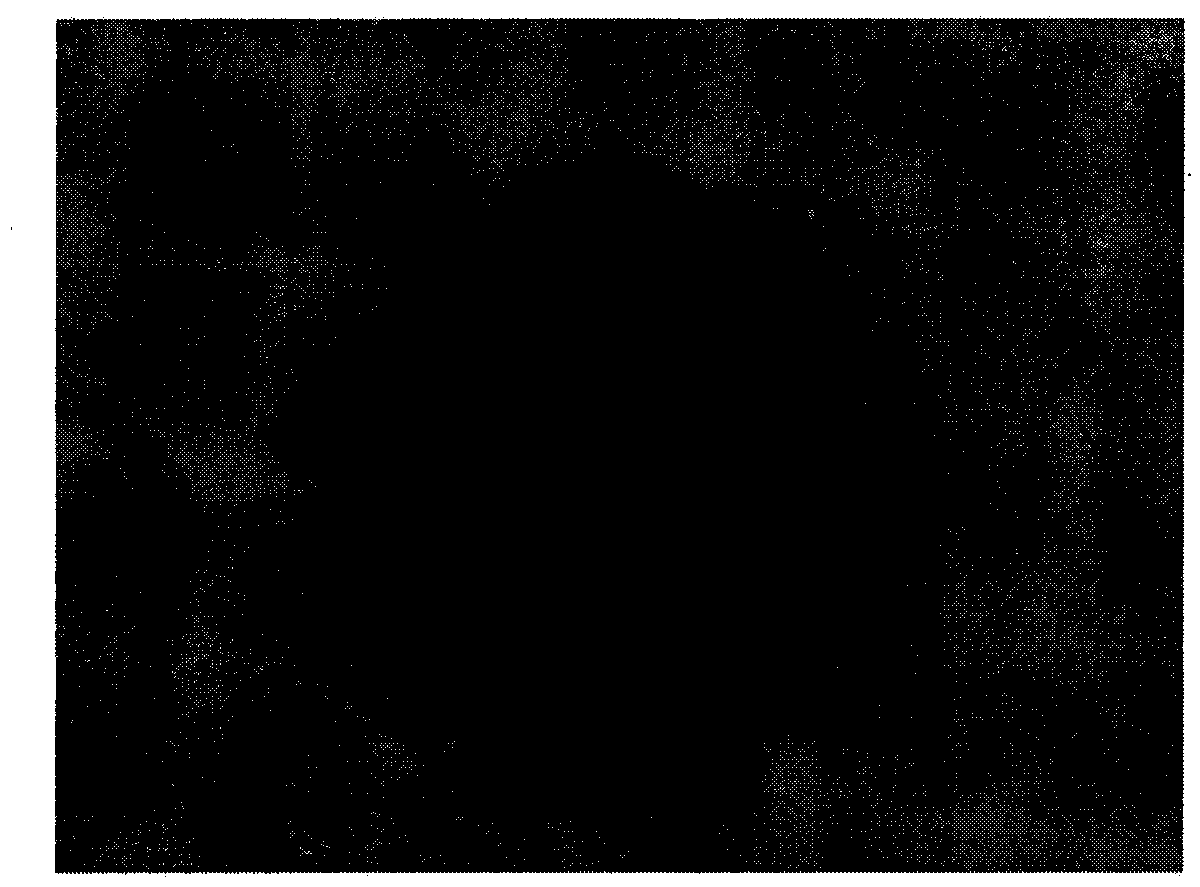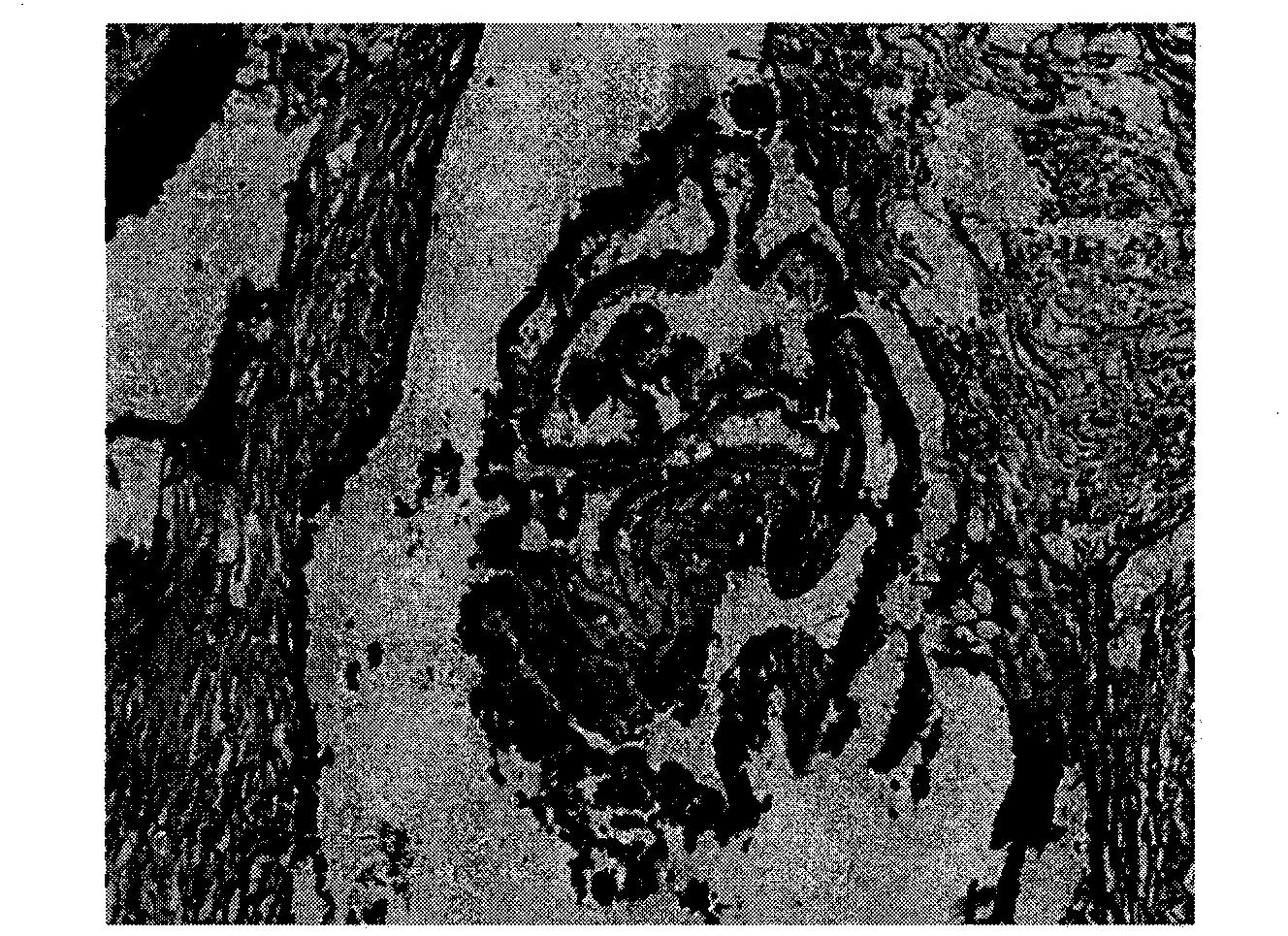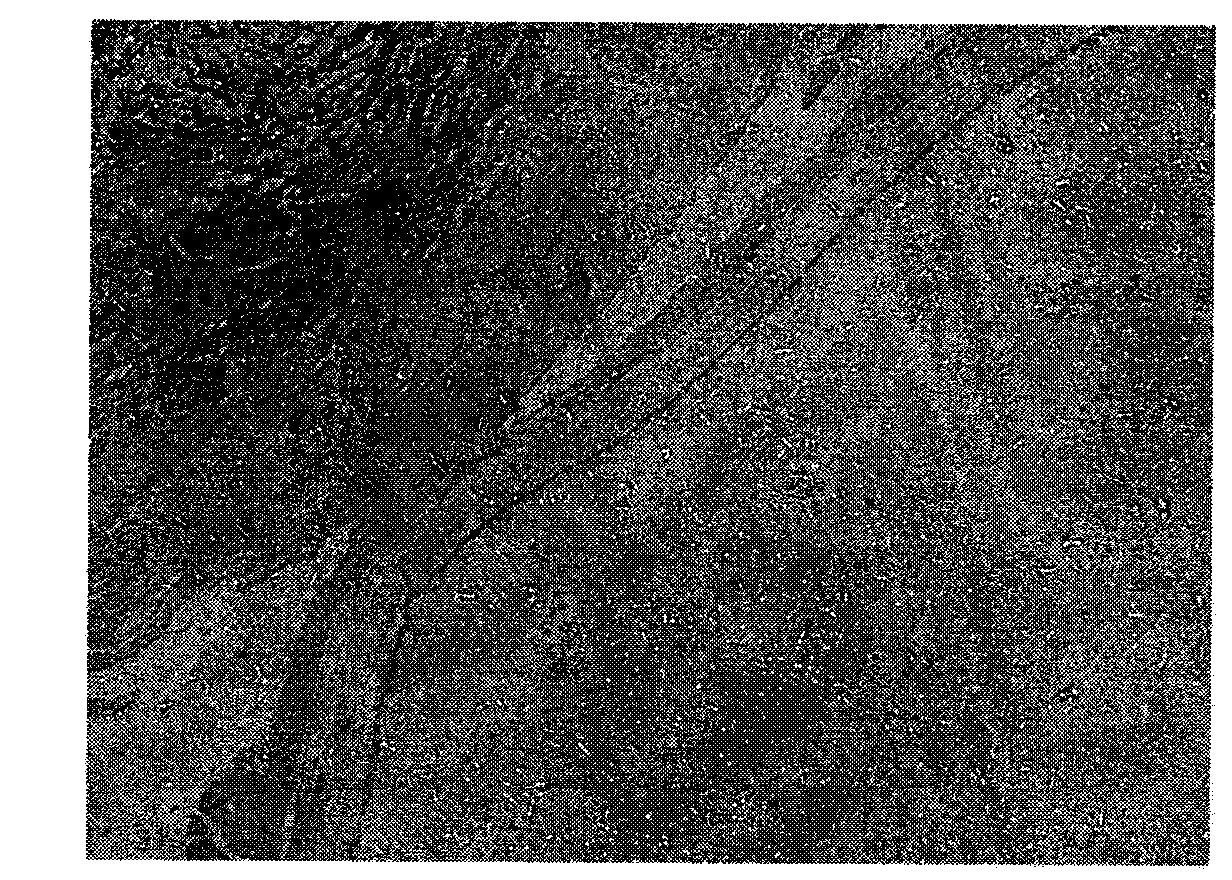Preparation and applications of echinococcus multilocularis resistant vesicle wall tissue (malpighian layer and cuticle layer) monoclonal antibody
A technology of monoclonal antibody and alveolar sporocyst, applied in the field of biotechnology and cell engineering, can solve the problems of lack of monoclonal antibody and inability to develop
- Summary
- Abstract
- Description
- Claims
- Application Information
AI Technical Summary
Problems solved by technology
Method used
Image
Examples
Embodiment 1
[0016] Example 1 - Establishment of cell lines
[0017] 1. Antigen Preparation
[0018] Materials: gerbils infected by alveolar coccus, petri dishes, surgical instruments, 50ml round-bottom centrifuge tubes for disinfection, 0.9% sodium chloride injection, tissue homogenizer (Ningbo Xinzhi XHF-D), cell ultrasonic pulverizer ( Ningbo Xinzhi JY92-II).
[0019] Procedure: The gerbils infected with alveolar coccidia were killed by over-anesthesia with ether. Soak in 75% ethanol for 15 minutes to disinfect the body surface. Open the abdomen according to the anatomical level. Cut well-grown alveolar coccidioid tissue in the abdominal cavity and put it into a petri dish, add 6ml of 0.9% sodium chloride injection. Carefully remove host tissue and blood vessels from the surface of the worm with ophthalmic scissors. Take 15g of processed hydatid tissue and put it into a 50ml centrifuge tube.
[0020] Break up the tissue with a tissue homogenizer at 2800 rpm for 3 minutes. Centrif...
Embodiment 2
[0049] Embodiment 2-expansion culture and cryopreservation of cell lines
[0050] 1. Expansion of cell lines
[0051] The obtained positive cells were taken out from the 96-well plate and put into a 24-well plate for expanded culture. The culture medium is complete culture medium.
[0052] 2. Cryopreservation of hybridoma cells
[0053] Materials: Cell cryopreservation medium: 25ml of calf serum, 20ml of RPMI1640 incomplete culture medium, 5ml of dimethyl sulfoxide were mixed as cell cryopreservation medium. -70°C refrigerator with liquid nitrogen, cryopreservation tubes.
[0054] Steps: observing the monoclonal hybridoma cells expanded and cultured in the 24-well culture plate, when the bottom of the well is covered, it is observed that the cells grow well, and the living cells are greater than 90%. Blow off the cells at the bottom of the well with complete cell culture medium. 2-3 wells were collected into centrifuge tubes. After centrifugation at 2000rpm for 5min, the...
Embodiment 3
[0055] Example 3-Mass preparation of monoclonal antibody (preparation of ascites)
[0056] Materials: 6-8 weeks old Balb / c mice, liquid paraffin, cell counting plate, RPMI1640 incomplete culture medium.
[0057] Steps: mouse sensitization: Balb / c mice were sensitized with liquid paraffin, and the injection volume was 500ul / mouse. Ascitic fluid was prepared 10 days later. Injection of cells: Collect hybridoma cells and wash the cells twice with RPMI1640 incomplete culture medium. Take 1 to 1.5 million cells and inject them into the abdominal cavity of mice. After one week, it can be seen that the mice are inactive and the abdominal cavity of the mice is enlarged. Ascites collection: 7 to 10 days after cell inoculation, ascites can be seen. Closely observe the health status of the animals and signs of ascites. When ascites is as much as possible and the mice are on the verge of death, kill the mice and inhale the ascites into the test tube. The collected ascites was stored in ...
PUM
 Login to View More
Login to View More Abstract
Description
Claims
Application Information
 Login to View More
Login to View More - R&D
- Intellectual Property
- Life Sciences
- Materials
- Tech Scout
- Unparalleled Data Quality
- Higher Quality Content
- 60% Fewer Hallucinations
Browse by: Latest US Patents, China's latest patents, Technical Efficacy Thesaurus, Application Domain, Technology Topic, Popular Technical Reports.
© 2025 PatSnap. All rights reserved.Legal|Privacy policy|Modern Slavery Act Transparency Statement|Sitemap|About US| Contact US: help@patsnap.com



